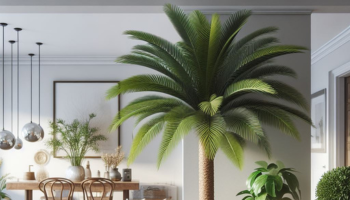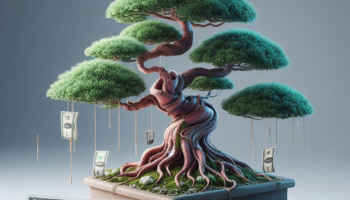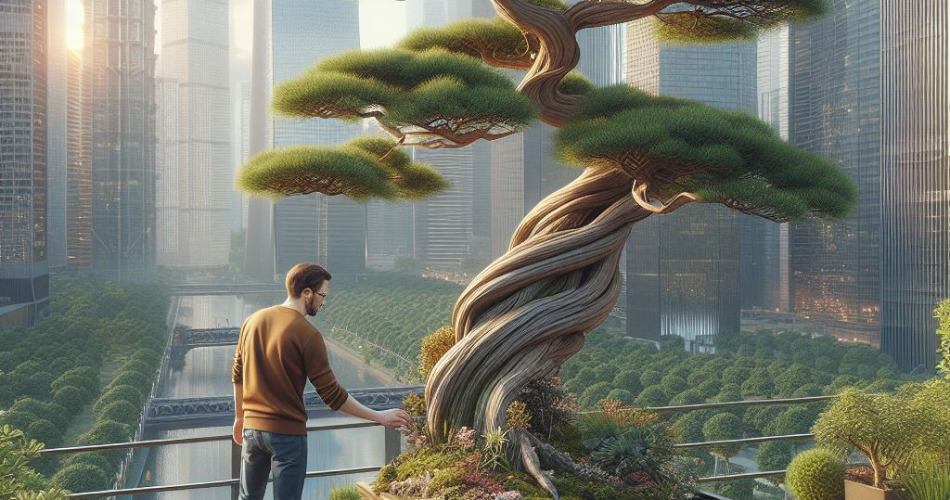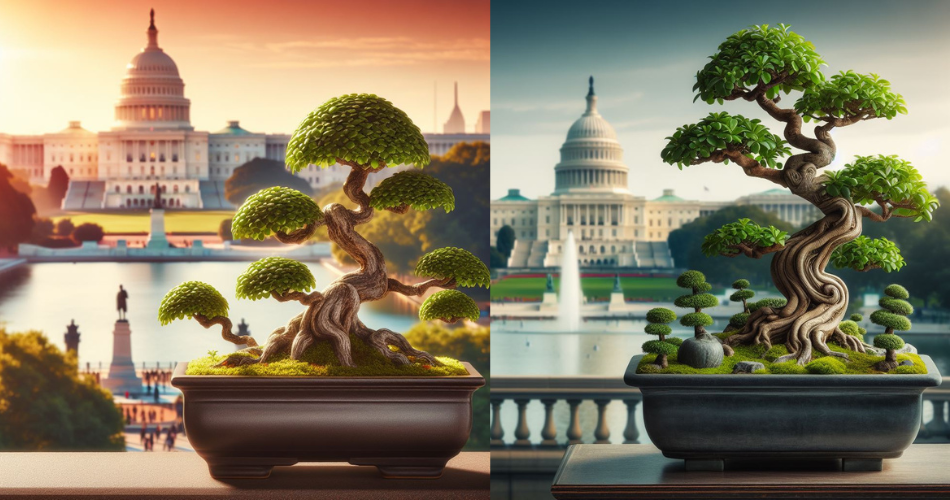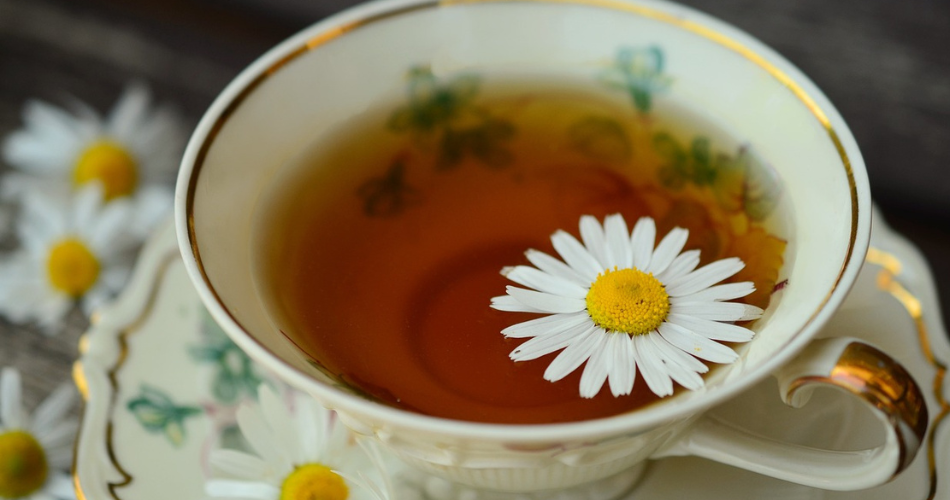
Bonsai trees, with their intricate beauty and captivating presence, have become increasingly popular as a unique form of indoor and outdoor decor. These miniature trees, carefully cultivated and pruned to mimic their larger counterparts, offer a sense of tranquility and natural elegance to any home. Choosing the right bonsai tree for your living space involves consideration of various factors such as species, care requirements, and available space. In this comprehensive guide, we will explore the world of bonsai trees and delve into which types are best suited for home environments. Whether you are a seasoned bonsai enthusiast or a beginner looking to embark on a new botanical journey, this article will provide you with valuable insights to help you select the perfect bonsai tree for your home.
I. Introduction to Bonsai Trees
Welcome to the wonderful world of bonsai trees! These miniature trees have captured the hearts of plant enthusiasts around the globe. Derived from the Japanese words “bon” (tray) and “sai” (planting), bonsai refers to the art of growing and shaping small trees in pots. These tiny living sculptures can bring nature’s beauty right into your home.
II. Benefits of Having a Bonsai Tree at Home
1. Aesthetic Appeal and Natural Decor
Imagine having a living piece of art sitting on your windowsill or adorning your coffee table. Bonsai trees add a touch of elegance and natural beauty to any living space. Their intricate forms and delicate foliage create a serene and calming atmosphere that is hard to replicate with any other indoor plant.
2. Stress Relief and Mental Well-being
In today’s fast-paced world, finding moments of tranquility can be a challenge. Bonsai trees offer a therapeutic escape from the chaos. Taking care of these mini trees requires patience and mindful attention, which can help reduce stress and promote mental well-being. It’s like having your own little Zen garden right at home.
3. Learning Patience and Mindfulness
Growing a bonsai tree is no easy feat. It requires dedication, patience, and a gentle touch. As you care for your bonsai, you’ll learn to appreciate the beauty of slow growth and the art of shaping and pruning. It’s a wonderful practice in patience and mindfulness, allowing you to connect with nature on a deeper level.
III. Factors to Consider When Choosing a Bonsai Tree for Home
1. Indoor or Outdoor Bonsai
Before diving into the world of bonsai, you need to decide if you want an indoor or outdoor bonsai tree. Indoor bonsai trees thrive in moderate light conditions and are more suitable for those living in apartments or houses with limited outdoor space. Outdoor bonsai trees, on the other hand, require specific climate conditions and should be placed outside for most of the year.
2. Size and Space Requirements
Consider the size of your living space and the amount of time and effort you’re willing to invest in maintaining your bonsai. Some trees can grow quite large, while others remain small and compact. Make sure you choose a bonsai tree that fits well with your available space and lifestyle.
3. Species and Characteristics
Each bonsai tree species has its own unique characteristics and care requirements. Some trees prefer bright sunlight, while others thrive in shadier conditions. Research the specific needs of the bonsai tree species you’re interested in to ensure it will thrive in your home environment.
4. Level of Care and Maintenance
Consider your level of experience and commitment to caring for a bonsai tree. Some species are more forgiving and tolerant of beginner mistakes, while others demand more attention and expertise. Be honest with yourself about your green thumb skills and choose a bonsai tree that matches your capabilities.
IV. Top Recommended Bonsai Trees for Home
1. Juniper Bonsai
If you’re a bonsai beginner, the Juniper bonsai is a fantastic choice. Known for its hardy nature and impressive resilience, this tree can handle a wide range of growing conditions. Its distinctive needles and rugged appearance make it a timeless classic in the bonsai world.
2. Ficus Bonsai
For those seeking an indoor bonsai tree, the Ficus bonsai is an excellent option. With its glossy leaves and flexible trunk, the Ficus is a visually captivating addition to any room. It is also a forgiving tree that tolerates lower light conditions, making it ideal for beginners.
3. Chinese Elm Bonsai
The Chinese Elm bonsai is a popular choice for bonsai enthusiasts due to its small leaves and graceful branches. This tree thrives both indoors and outdoors, making it a versatile option. Its ability to withstand a variety of conditions and adaptability to different bonsai styles make it a fantastic choice for beginners and experienced growers alike.
4. Jade Bonsai
If you’re looking for a unique and exotic bonsai tree, the Jade bonsai is worth considering. This succulent tree has thick, fleshy leaves and a distinctive trunk that gives it a striking appearance. Jade bonsai trees are relatively easy to care for, making them suitable for beginners or anyone with a busy lifestyle.
Now that you know the ins and outs of choosing a bonsai tree for your home, it’s time to let your creativity flourish and bring a little slice of nature indoors. Happy bonsai tree hunting!
V. Care and Maintenance Tips for Home Bonsai Trees
1. Watering and Humidity Control
When it comes to watering your home bonsai tree, strike a balance between drowning it and leaving it thirsty for days. You don’t want your bonsai to turn into a desert cactus or a flooded swimming pool. Take the time to understand the specific watering needs of your bonsai tree species. And remember, just because you’re on vacation doesn’t mean your bonsai is. Find a reliable bonsai babysitter who knows how to keep the hydration levels just right.
2. Pruning and Shaping Techniques
Pruning and shaping your bonsai tree is like giving it a stylish haircut. But be careful not to go too Edward Scissorhands on it. Take it slow and steady, and resist the urge to turn your bonsai into a bonsai dinosaur or a bonsai hedgehog. Consult a bonsai expert or YouTube tutorial to learn the art of gentle pruning and shaping. You’ll create a gorgeous masterpiece without scaring your bonsai into an existential crisis.
3. Soil and Fertilizer Requirements
Your bonsai tree has a delicate relationship with soil and fertilizer, much like you and your morning coffee. Use a well-draining soil mix that provides enough nutrients without turning your bonsai into a fertilizer junkie. Think of it as a balanced diet for your tree. And remember, moderation is key. Don’t overfeed your bonsai or let it become malnourished. Keep a watchful eye on its growth and adjust the feeding schedule accordingly.
4. Sunlight and Temperature Considerations
Sunlight and temperature preferences vary among bonsai tree species, just like your preferences for beach or ski vacations. Some bonsai trees thrive in bright, indirect light, while others prefer a cozy spot away from direct sunlight. Make sure to read up on the specific needs of your bonsai when it comes to lighting and temperature. And don’t forget, your bonsai isn’t a houseplant; it can’t handle extreme temperature fluctuations like a champ. Keep it away from drafty windows and air-conditioning vents, and you’ll have a happy, sun-kissed bonsai.
VI. Common Mistakes to Avoid with Home Bonsai Trees
1. Overwatering or Underwatering
Water, water everywhere, but not a drop for your bonsai. Or maybe a little too much water, drowning the poor thing. Finding the right balance is crucial. Avoid overwatering or underwatering, as both can lead to disastrous consequences for your bonsai. Think of it as finding the sweet spot between a waterlogged rainforest and a parched desert.
2. Improper Pruning and Wiring
Pruning and wiring your bonsai tree is an art form. But be careful not to turn it into a botched painting by going overboard. Improper pruning can weaken the tree and make it vulnerable to pests and diseases. And as for wiring, don’t turn your bonsai into a bonsai contortionist. Be gentle and avoid tight wiring that can dig into the branches like a pair of overly tight pants. Your bonsai will thank you for being a kind and fashionable gardener.
3. Neglecting Soil Quality
You wouldn’t build a house on quicksand, so don’t expect your bonsai tree to thrive on subpar soil. Make sure you use a quality soil mix that provides proper drainage and nutrients. Cheap and poorly draining soil is like serving your bonsai a meal of fast food and soda – it might survive for a while, but it won’t be healthy. Invest in good soil for a happy and vibrant bonsai.
VII. Creating a Bonsai Tree Display in Your Home
Creating a bonsai tree display in your home is like decorating a mini art gallery. Choose a beautiful bonsai pot that complements your tree’s style and personality. Consider the overall aesthetic and find a spot that allows your bonsai to shine without being overshadowed by other decor. And don’t forget to admire your masterpiece from different angles, just like you’d appreciate a work of art. After all, your bonsai is a living masterpiece that deserves to be displayed with pride.
VIII. Conclusion and Final Thoughts on Choosing a Bonsai Tree for Home
Choosing a bonsai tree for your home is an exciting journey filled with challenges, rewards, and a touch of artistic expression. Remember to consider factors like space, care requirements, and your personal taste when selecting a bonsai. And most importantly, have fun with it! Bonsai tree care is an ongoing adventure that requires patience, dedication, and a sense of humor. So go forth, embrace the bonsai spirit, and let your home flourish with the beauty of these miniaturized marvels.
VIII. Conclusion and Final Thoughts on Choosing a Bonsai Tree for Home
In conclusion, incorporating a bonsai tree into your home can bring a touch of nature and serenity to your living space. By considering factors such as indoor or outdoor suitability, size, species, and care requirements, you can choose a bonsai tree that aligns with your preferences and lifestyle. Remember to provide the necessary care and attention to ensure the health and longevity of your bonsai tree. With proper maintenance and a little patience, your bonsai tree will flourish and become a cherished part of your home. So go ahead and embark on this delightful journey of bonsai cultivation, and enjoy the rewards of having a unique and captivating living work of art right in your own home.
FAQ
1. Can I keep a bonsai tree indoors?
Yes, certain bonsai tree species are well-suited for indoor environments. It is important to choose indoor-friendly species that can thrive with lower light levels and controlled temperature and humidity conditions.
2. How often should I water my bonsai tree?
The watering frequency for bonsai trees varies depending on factors such as the species, pot size, and environmental conditions. Generally, it is recommended to water the bonsai tree when the top inch of soil feels slightly dry. Overwatering or underwatering can be detrimental to the health of the tree, so it is essential to find the right balance.
3. Do bonsai trees require special care compared to regular potted plants?
Yes, bonsai trees require specialized care due to their unique nature and miniature size. They need regular pruning and shaping to maintain their desired form, as well as specific soil mixes and fertilizers to provide the necessary nutrients. Additionally, they may require occasional wiring to guide the growth. Understanding the specific needs of your bonsai tree is crucial for its overall health and longevity.
4. Can I create a bonsai tree display in a small living space?
Absolutely! Bonsai trees are ideal for small living spaces as they can be grown in various sizes and shapes. You can choose compact species or utilize techniques such as pruning and wiring to maintain a miniature form. Additionally, bonsai trees can be displayed on windowsills, shelves, or even as a centerpiece on a coffee table, making them versatile and adaptable for any home.

